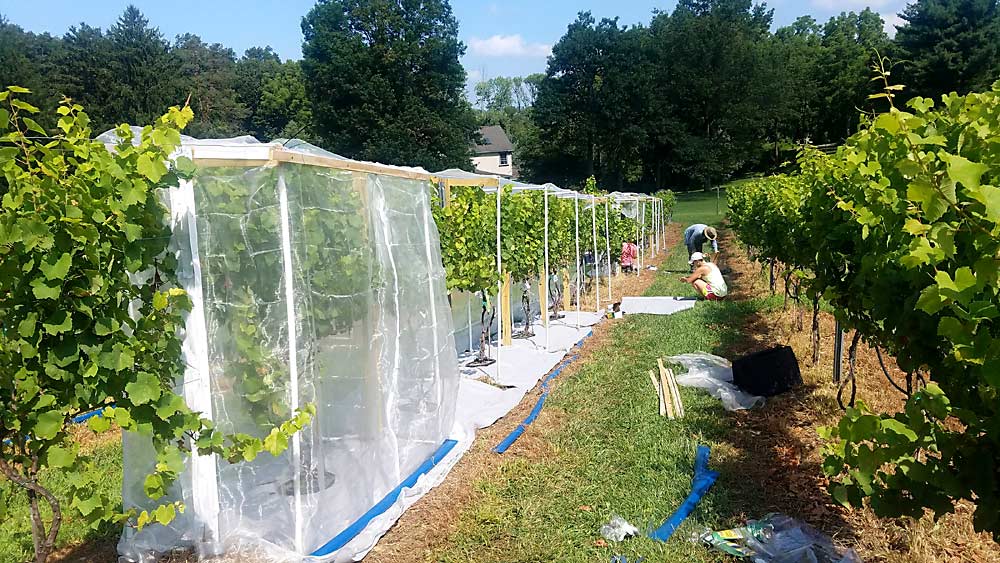
As the spotted lanternfly problem grows in magnitude, so do the research efforts to combat it. The invasive pest feeds voraciously on grapevines, and because it’s so new to the United States, little is known about its biology and behavior. That means few proven, effective strategies are in place to manage it.
A federally funded research project led by Penn State University is filling in those knowledge gaps.
Native to Asia, spotted lanternfly (SLF) was first discovered in Eastern Pennsylvania in 2014. Populations have now established in eight additional states, and the pest has been detected in six others, with dead bugs found in Michigan, California and Oregon last year, said Heather Leach, a Penn State extension associate who gave the latest numbers during the Great Lakes Fruit, Vegetable & Farm Market EXPO in December.
Leach was hired in 2018 to deal exclusively with spotted lanternfly, which has done significant damage to vineyards in Eastern Pennsylvania. The following year, Penn State received $7.3 million from the U.S. Department of Agriculture’s National Institute of Food and Agriculture to lead a four-year SLF research project.
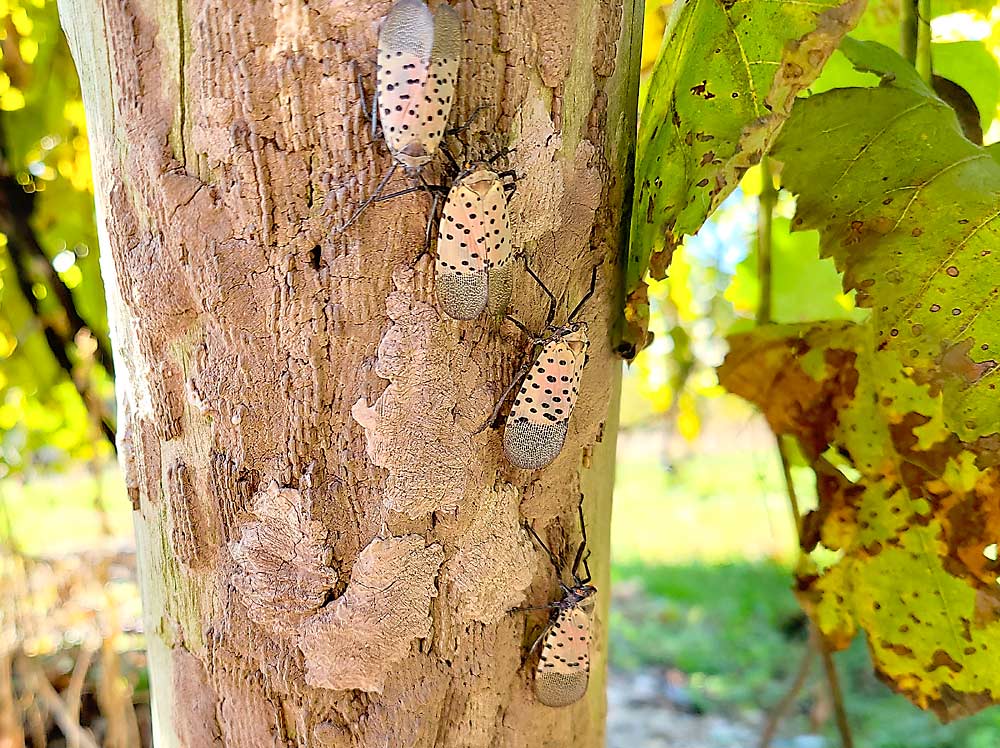
The effort to find sustainable management strategies for SLF brought together different research efforts across the country, allowing dozens of collaborators to share their results faster and to avoid redundancies, said Julie Urban, project leader and a Penn State associate research professor.
“Rather than wait until research is published, we can talk at regular meetings and share,” she said.
Project collaborators are studying SLF’s biology and developing tactics to manage the bug, especially in vineyards. They’re also studying its natural predators and parasitoids, seeking effective biological controls. Urban, an evolutionary biologist who has studied the lanternfly family around the world, said that of the 500 species of lanternfly, SLF is the only one that’s a known pest.
Tracy Leskey, an entomologist with USDA’s Agricultural Research Service, tackled an important piece of the puzzle: figuring out how to rear an SLF colony in a laboratory setting. Successful establishment of a colony will speed up understanding of SLF’s biology and behavior, but it has proven especially difficult because the pest is such a voracious feeder, Urban said.
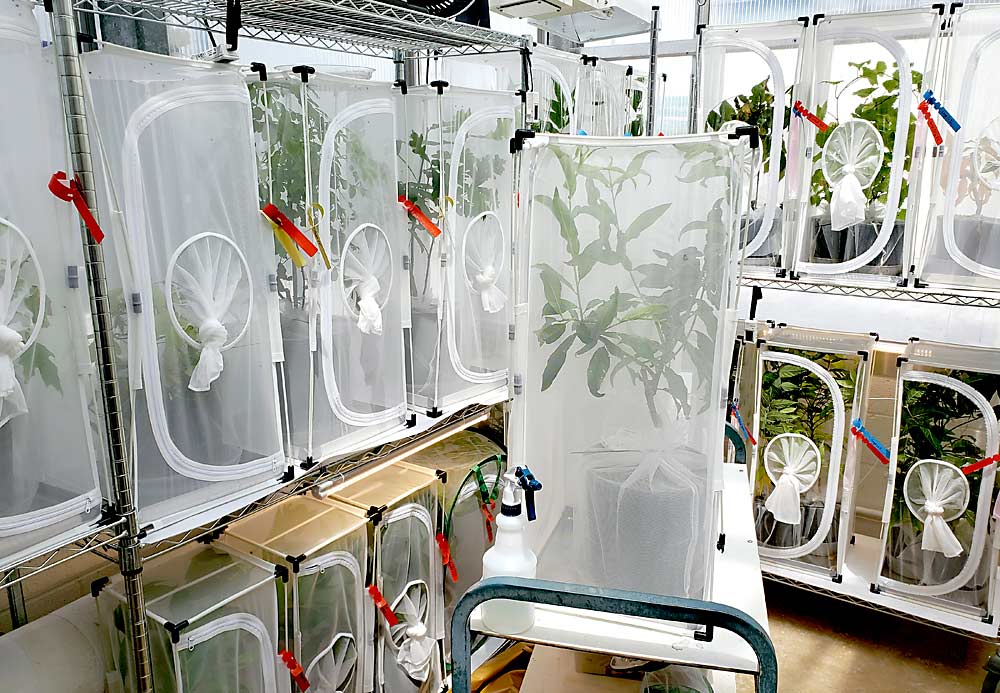
Leskey’s team hasn’t yet reared a persistent, year-round SLF colony in the lab, but they’re getting close, having successfully reared two consecutive generations to adulthood. After much experimentation, they discovered that potted tree of heaven plants are a good food source, resulting in the best SLF survival rates so far. A combination of tree of heaven and grape plants also works well, Leskey said.
On the behavioral front, Leskey’s team has discovered that SLF nymphs walk for much longer than adults do on a vertical plane — a tree, for example. Once adults find a place to feed, they’ll stop there for a long time, she said.
Leskey worked on a similar research project for the brown marmorated stink bug, which helped speed up results on that invasive pest, she said.
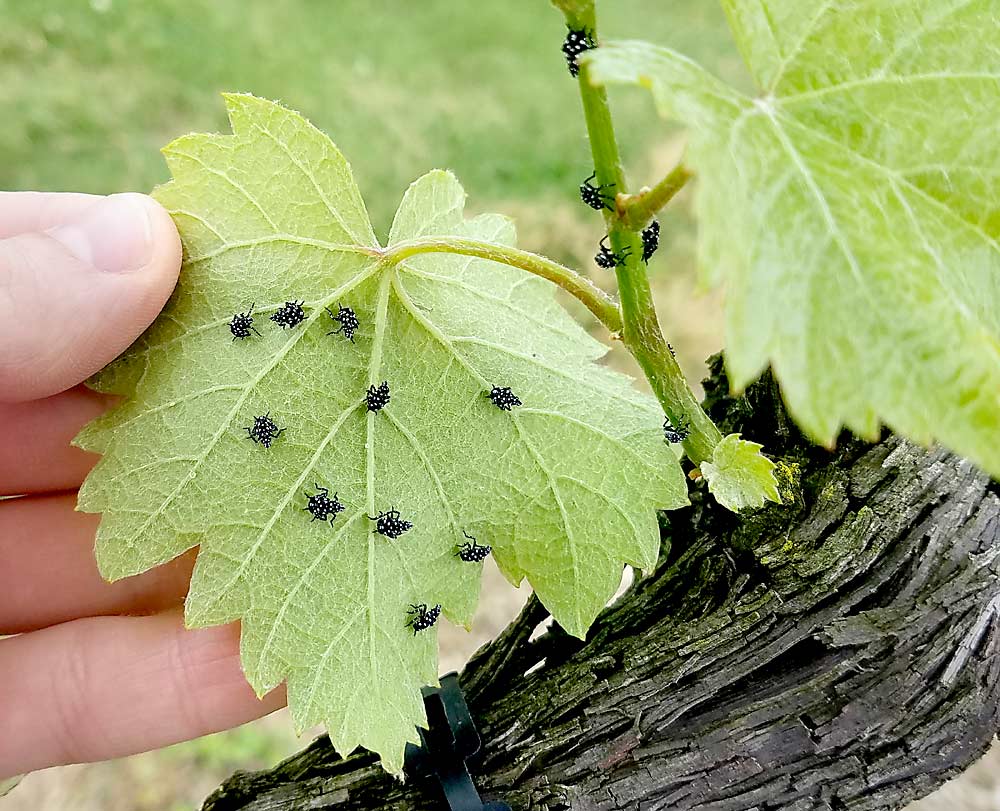
Leach, another project collaborator, has been studying SLF’s behavior in Pennsylvania vineyards. She learned that SLF will linger at the edge of vineyards until August or so, when adults will invade in large numbers and start feeding on shoots, followed by trunks later in the season. The insects are most active in afternoons and evenings. SLF feeding stresses the vines — reducing photosynthesis, transpiration, carbon assimilation, Brix and cold hardiness — and might eventually kill them. Populations peak in mid- to late September, during harvest, when growers don’t want to use chemical controls.
To this point, Eastern Pennsylvania growers mainly rely on insecticides to control SLF, but it’s not an ideal solution. SLF is easy to kill with insecticides, but there can be so many in the surrounding landscape that as soon as the spraying is over, the bugs reinvade in massive numbers. And it’s expensive. Between 2016 and 2018, the cost of insecticide applications over a grower’s season rose from $54 per acre to $147 per acre, according to Leach.
One of the project’s long-term goals is to develop more sustainable management solutions, such as biological controls. In her experiments, Leach found that border sprays and exclusion netting can be effective management tactics but need to be made cost-effective and practical for commercial growers. •
—by Matt Milkovich

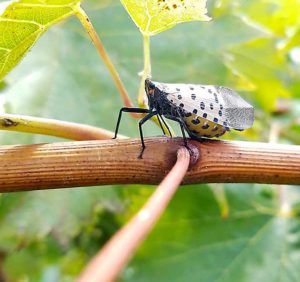





Leave A Comment